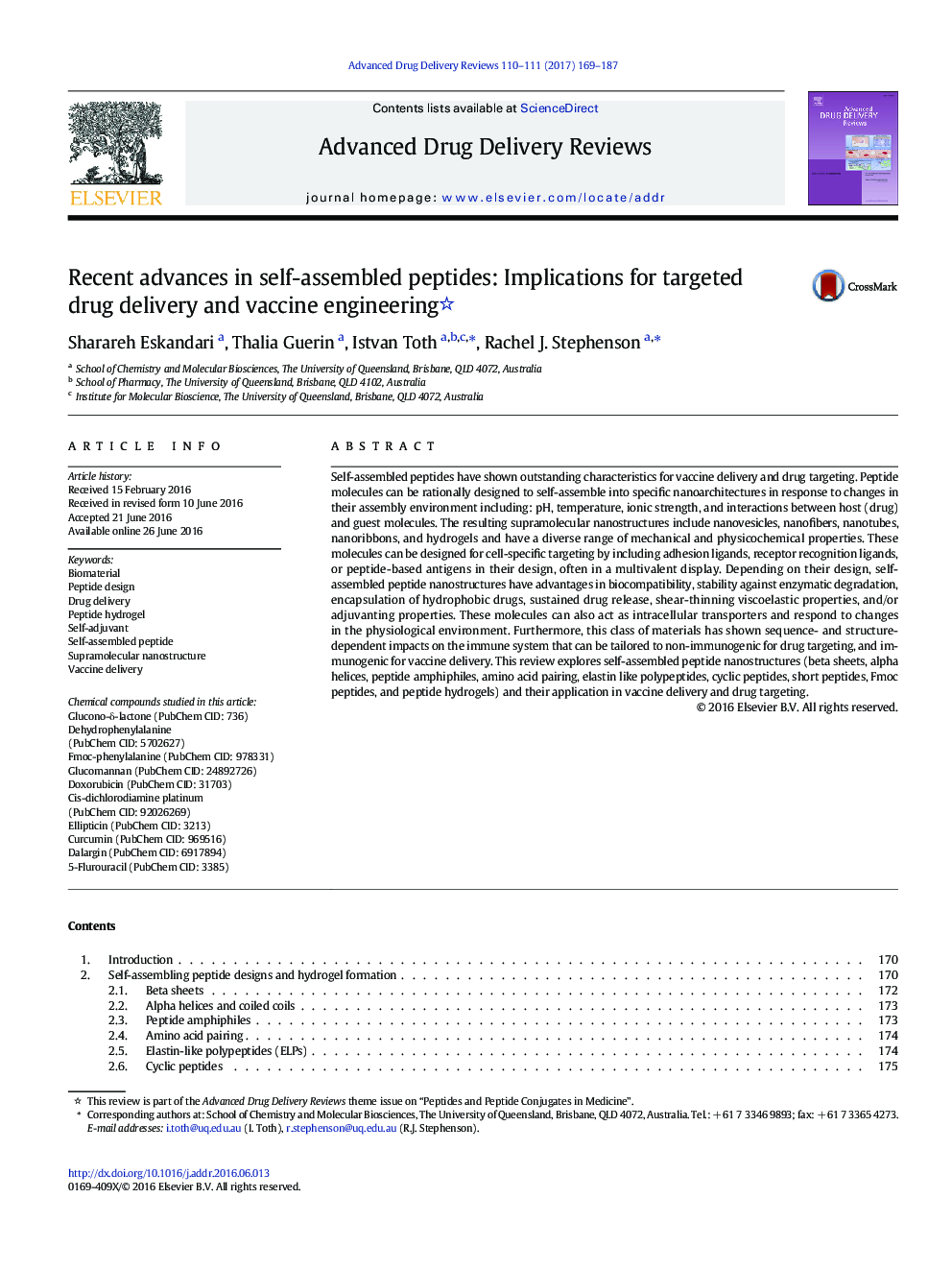| Article ID | Journal | Published Year | Pages | File Type |
|---|---|---|---|---|
| 5520000 | Advanced Drug Delivery Reviews | 2017 | 19 Pages |
Self-assembled peptides have shown outstanding characteristics for vaccine delivery and drug targeting. Peptide molecules can be rationally designed to self-assemble into specific nanoarchitectures in response to changes in their assembly environment including: pH, temperature, ionic strength, and interactions between host (drug) and guest molecules. The resulting supramolecular nanostructures include nanovesicles, nanofibers, nanotubes, nanoribbons, and hydrogels and have a diverse range of mechanical and physicochemical properties. These molecules can be designed for cell-specific targeting by including adhesion ligands, receptor recognition ligands, or peptide-based antigens in their design, often in a multivalent display. Depending on their design, self-assembled peptide nanostructures have advantages in biocompatibility, stability against enzymatic degradation, encapsulation of hydrophobic drugs, sustained drug release, shear-thinning viscoelastic properties, and/or adjuvanting properties. These molecules can also act as intracellular transporters and respond to changes in the physiological environment. Furthermore, this class of materials has shown sequence- and structure-dependent impacts on the immune system that can be tailored to non-immunogenic for drug targeting, and immunogenic for vaccine delivery. This review explores self-assembled peptide nanostructures (beta sheets, alpha helices, peptide amphiphiles, amino acid pairing, elastin like polypeptides, cyclic peptides, short peptides, Fmoc peptides, and peptide hydrogels) and their application in vaccine delivery and drug targeting.
Graphical abstractDownload high-res image (153KB)Download full-size image
